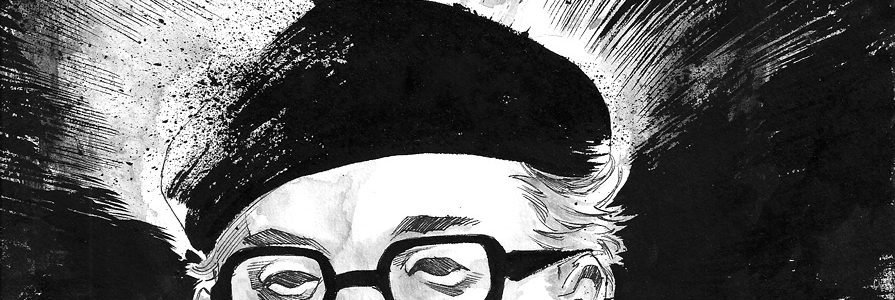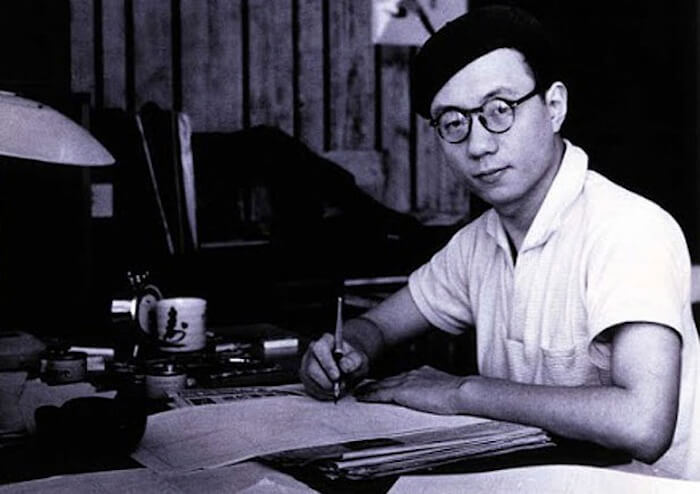

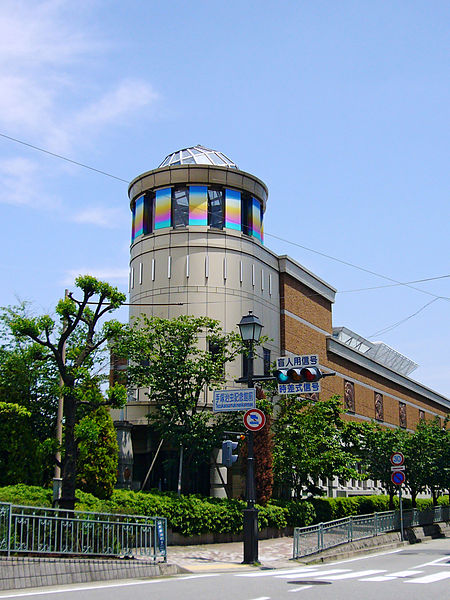
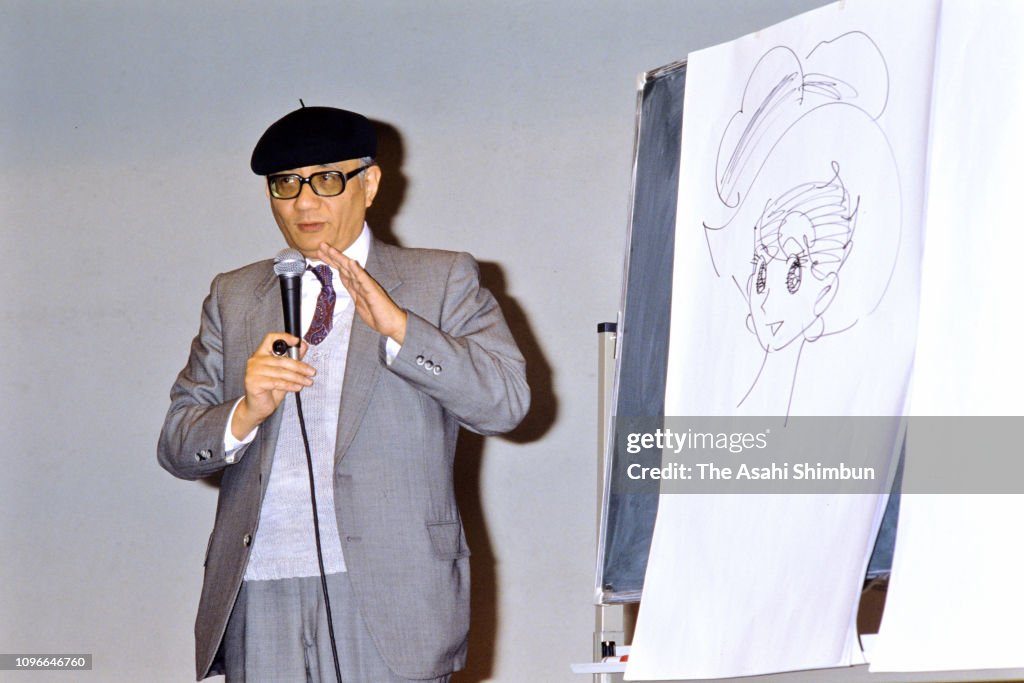
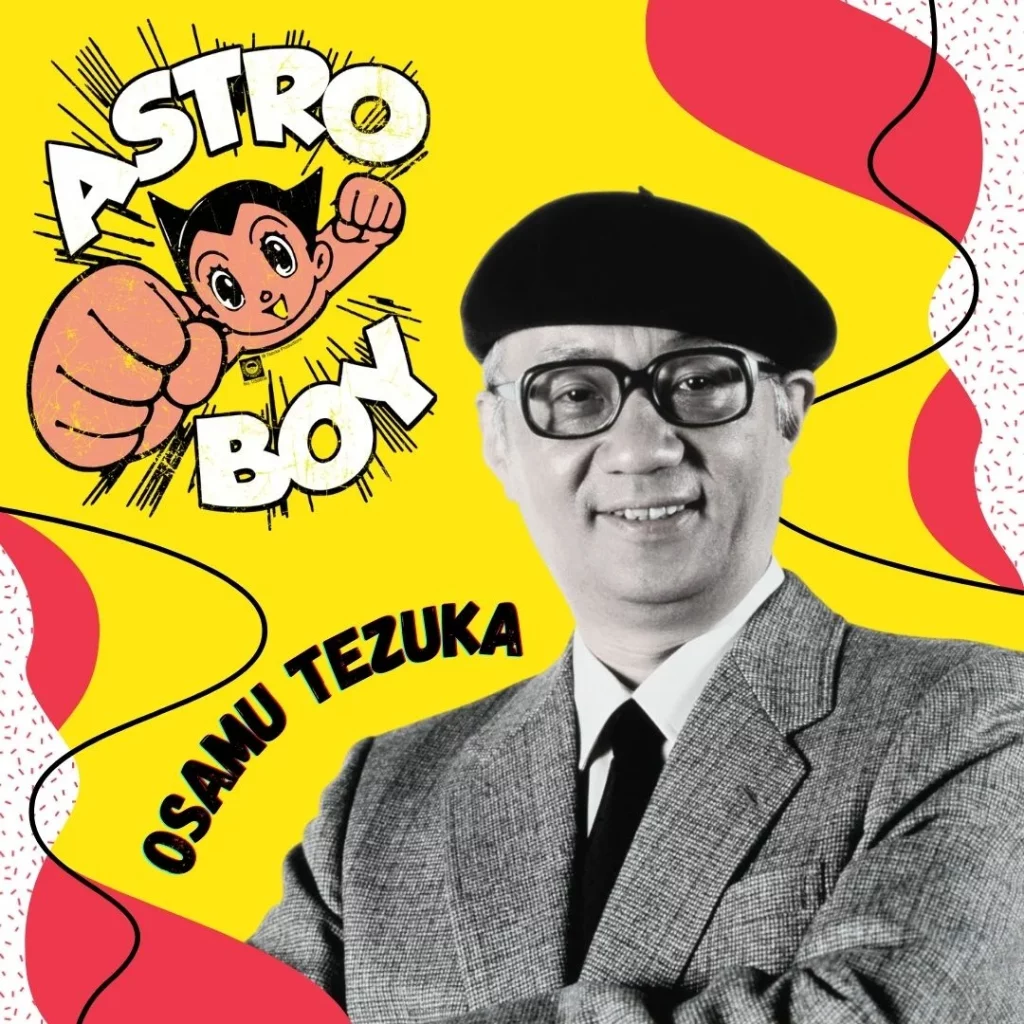
Osamu Tezuka (手塚 治虫, born 手塚 治, Tezuka Osamu; 3 November 1928 – 9 February 1989) was a Japanese manga artist, cartoonist, and animator. Born in Osaka Prefecture, his prolific output, pioneering techniques, and innovative redefinitions of genres earned him such titles as “the Father of Manga” (マンガの父, Manga no Chichi), “the Godfather of Manga” (マンガの教父, Manga no Kyōfu) and “the God of Manga” (マンガの神様, Manga no Kami-sama). Additionally, he is often considered the Japanese equivalent to Walt Disney, who served as a major inspiration during Tezuka’s formative years.[2] Though this phrase praises the quality of his early manga works for children and animations, it also blurs the significant influence of his later, more literary, gekiga works.
Tezuka began what was known as the manga revolution in Japan with his New Treasure Island published in 1947. His output would spawn some of the most influential, successful, and well-received manga series including the children mangas Astro Boy, Princess Knight and Kimba the White Lion, and the adult-oriented series Black Jack, Phoenix, and Buddha, all of which won several awards.
Tezuka died of stomach cancer in 1989. His death had an immediate impact on the Japanese public and other cartoonists. A museum was constructed in Takarazuka dedicated to his memory and life works, and Tezuka received many posthumous awards. Several animations were in production at the time of his death along with the final chapters of Phoenix, which were never released.
Osamu Tezuka (手塚 治虫, born 手塚 治, Tezuka Osamu; 3 November 1928 – 9 February 1989) was a Japanese manga artist, cartoonist, and animator. Born in Osaka Prefecture, his prolific output, pioneering techniques, and innovative redefinitions of genres earned him such titles as “the Father of Manga” (マンガの父, Manga no Chichi), “the Godfather of Manga” (マンガの教父, Manga no Kyōfu) and “the God of Manga” (マンガの神様, Manga no Kami-sama). Additionally, he is often considered the Japanese equivalent to Walt Disney, who served as a major inspiration during Tezuka’s formative years.[2] Though this phrase praises the quality of his early manga works for children and animations, it also blurs the significant influence of his later, more literary, gekiga works.
Tezuka began what was known as the manga revolution in Japan with his New Treasure Island published in 1947. His output would spawn some of the most influential, successful, and well-received manga series including the children mangas Astro Boy, Princess Knight and Kimba the White Lion, and the adult-oriented series Black Jack, Phoenix, and Buddha, all of which won several awards.
Tezuka died of stomach cancer in 1989. His death had an immediate impact on the Japanese public and other cartoonists. A museum was constructed in Takarazuka dedicated to his memory and life works, and Tezuka received many posthumous awards. Several animations were in production at the time of his death along with the final chapters of Phoenix, which were never released.
Tezuka was a descendant of Hattori Hanzō,[69] a famous ninja and samurai who faithfully served Tokugawa Ieyasu during the Sengoku period in Japan.
Tezuka’s childhood nickname was gashagasha-atama: “messy head” (gashagasha is slang for messy, atama means head).[citation needed] As a child, Tezuka’s arms swelled up and he became ill. He was treated and cured by a doctor, which made him also want to be a doctor. At a crossing point, he asked his mother whether he should look into doing manga full-time or whether he should become a doctor. At the time, being a manga author was not a particularly rewarding job. The answer his mother gave was: “You should work doing the thing you like most of all.” Tezuka decided to devote himself to manga creation on a full-time basis. He graduated from Osaka University and obtained his medical degree, but he would later use his medical and scientific knowledge to enrich his sci-fi manga, such as Black Jack.[50][70]
Tezuka enjoyed insect collecting and entomology (even adding the character 虫 ‘bug’ to his pen name), Disney, and baseball—in fact, he licensed the “grown up” version of his character Kimba the White Lion as the logo for the Seibu Lions of the Nippon Professional Baseball League.[71][72] A fan of Superman, Tezuka was honorary chairman of Japan’s Superman Fan Club.[73]
In 1959 Osamu Tezuka married Etsuko Okada at a Takarazuka hotel.[citation needed]
Tezuka met Walt Disney in person at the 1964 New York World’s Fair. In a 1986 entry in his personal diary, Tezuka stated that Disney wanted to hire him for a potential science fiction project.[citation needed]
In January 1965, Tezuka received a letter from American film director Stanley Kubrick, who had watched Astro Boy and wanted to invite Tezuka to be the art director of his next movie, 2001: A Space Odyssey (which was eventually released in 1968). Although flattered by Kubrick’s invitation, Tezuka could not afford to leave his studio for a year to live in England, so he had to turn down the offer. Although he was not able to work on 2001, he loved the film, and would play its soundtrack at maximum volume in his studio to keep him awake during long nights of work.[74][75]
Tezuka’s son Makoto Tezuka became a film and anime director.[71]
